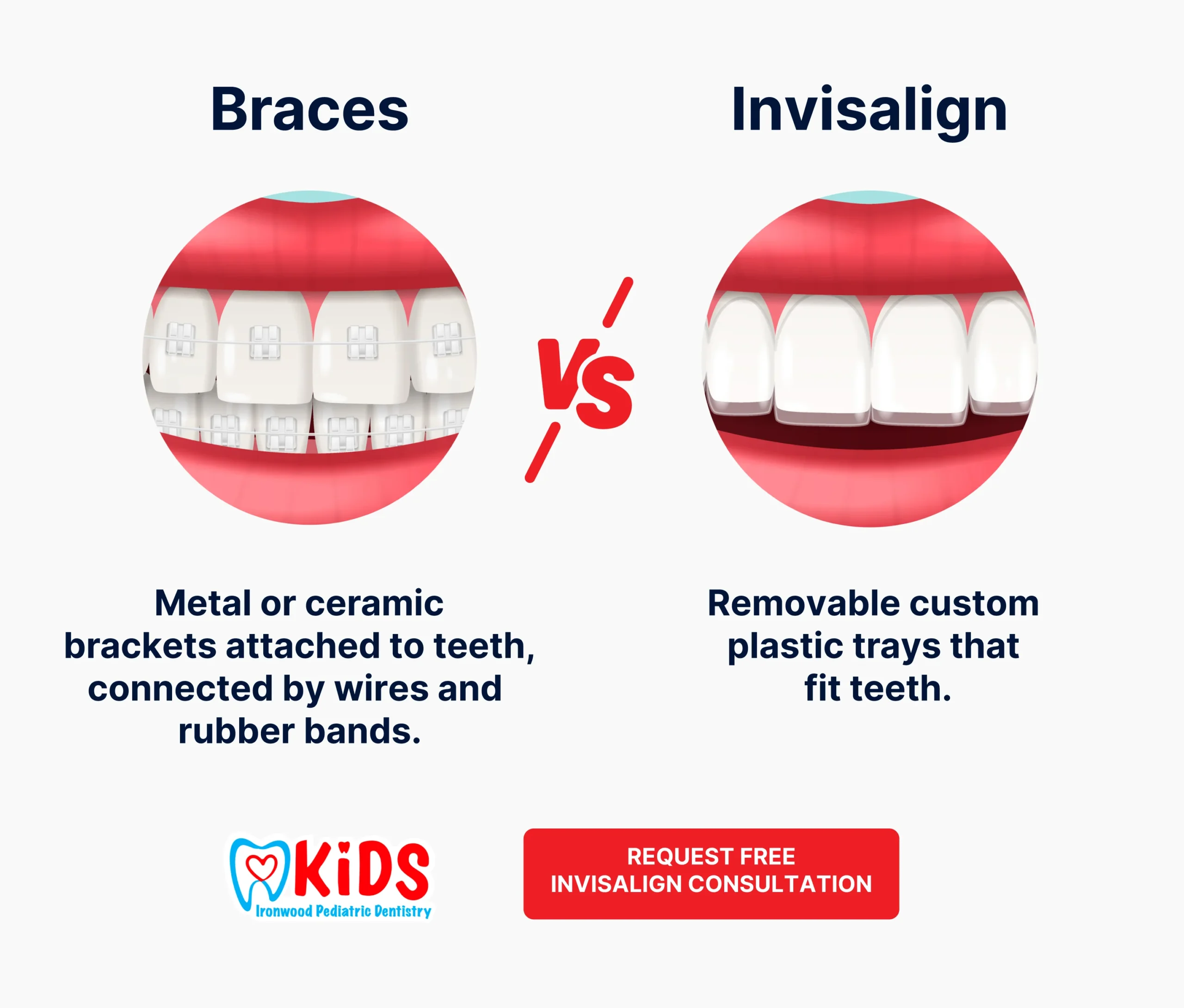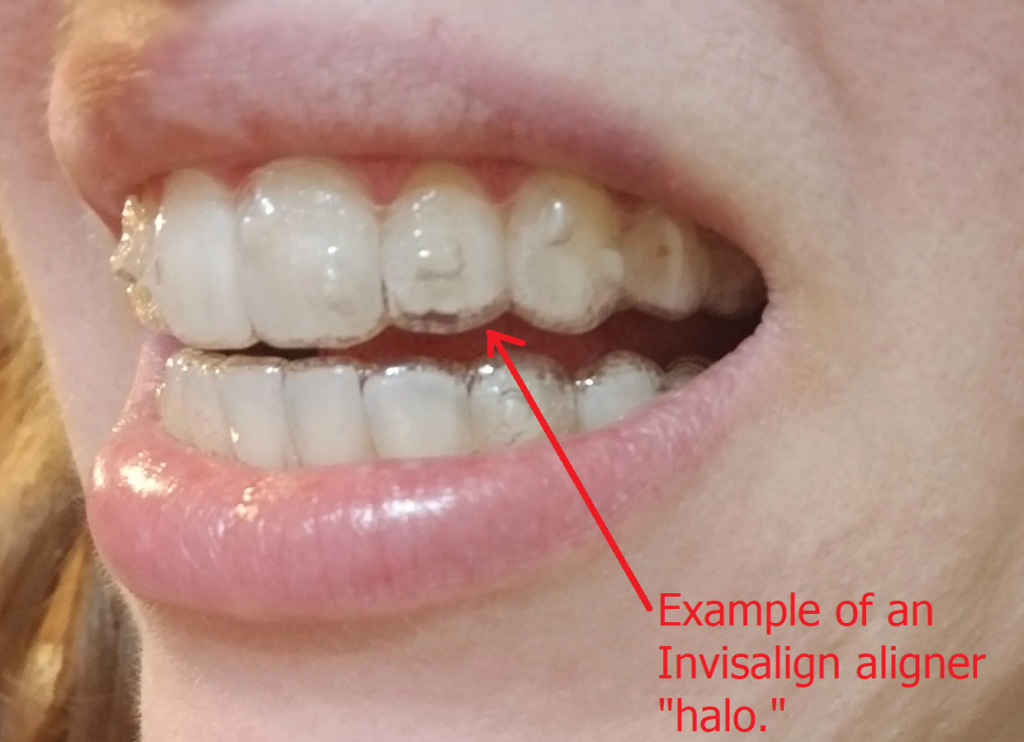The Ultimate Comparison: Invisalign vs. Traditional Braces for Adults
Invisalign vs. Traditional Braces: Which Choice Is Right for You?
When taking into consideration orthodontic therapy, the option between Invisalign and standard dental braces provides a number of crucial variables that warrant mindful evaluation. Invisalign provides a discreet choice with removable aligners, while standard braces provide an extra visible yet effective option for serious misalignment.
Review of Therapy Options

On the other hand, conventional dental braces contain steel brackets and wires that are bound to the teeth. This approach applies constant pressure with time to achieve positioning. While reliable for complex orthodontic problems, standard dental braces require routine gos to for modifications and can posture challenges in maintaining dental hygiene as a result of the trouble of cleaning about braces and cords.
Both alternatives have their benefits, and the option commonly depends upon specific oral conditions, lifestyle preferences, and client compliance. Eventually, getting in touch with an orthodontic expert is crucial for identifying the most appropriate treatment plan tailored to private needs. Comprehending the nuances of each option can substantially influence the general success of orthodontic therapy.
Visual Factors To Consider
A substantial variable affecting the option between Invisalign and conventional braces is the visual charm each treatment provides. Invisalign aligners are crafted from clear plastic, making them virtually invisible when put on. This very discreet look is particularly appealing to adults and young adults that might feel self-conscious concerning their orthodontic therapy. The capability to maintain an all-natural smile throughout the positioning process can significantly boost the individual's confidence in social and professional setups.
On the other hand, standard dental braces contain metal braces and wires, which can be extra visible. While advancements in orthodontic innovation have caused the growth of smaller sized braces and tinted elastics, typical dental braces still keep a more conspicuous profile. For some individuals, the exposure of braces might deter them from seeking essential treatment.
Inevitably, the choice between Invisalign and typical braces may pivot on personal preferences pertaining to aesthetic appeals. Patients who focus on discernment commonly lean towards Invisalign, while those who are less concerned concerning visibility might select traditional braces. Recognizing the aesthetic effects of each option is critical for making an informed decision that lines up with one's way of living and preferences.
Convenience and Convenience

In terms of convenience, Invisalign aligners are detachable, allowing clients to enjoy their favored foods without limitation and preserve ideal oral health. Brushing and flossing are simplified, as the aligners can be obtained during these routines, whereas typical braces require mindful navigating around brackets and cords.
In addition, Invisalign's progressive system enables less orthodontic sees. Clients usually get multiple collections of aligners at the same time, which can simplify the therapy process and reduce time invested in the orthodontist's chair. On the other hand, typical braces necessitate routine adjustments, making them less hassle-free for those with hectic timetables. Invisalign. In general, the convenience and benefit of Invisalign make it an appealing selection for many people looking for orthodontic treatment.
Treatment Duration and Performance
While both Invisalign and conventional dental braces work in dealing with oral misalignments, the duration of therapy can differ substantially in between both alternatives. Normally, Invisalign therapy can take anywhere from 12 to 18 months, depending on the complexity of the situation. The clear aligners function by progressively moving teeth into their desired placements, and regular follow-ups with an orthodontist help guarantee progression remains on the right track.
In contrast, standard dental braces often require a longer commitment, typically ranging from 18 months to three years. This is because of their fixed nature and the use of brackets and cables, which can be more effective for complex cases and extreme imbalances (Invisalign). The therapy performance of typical dental braces is well-documented, as my response they permit exact modifications and higher control over tooth motion
Ultimately, the choice between Invisalign and traditional dental braces might depend upon both the expected treatment duration and the details oral problems available. Consulting with an orthodontist is essential, as they can supply customized suggestions based on individual demands, ensuring the picked approach straightens with preferred outcomes and durations.
Price Contrast and Insurance Coverage Options
Price plays a considerable role in the decision-making procedure for individuals considering orthodontic treatment, whether choosing Invisalign or conventional braces. Typically, the cost of Invisalign arrays from $3,000 to $8,000, while standard braces commonly set you back between $2,000 and $6,000. Variables influencing these prices include the intricacy of the situation, the period of treatment, and geographical area.
Insurance insurance coverage can dramatically impact out-of-pocket expenditures. Numerous oral insurance coverage plans give partial protection for orthodontic therapies, however the specifics can differ commonly. It is crucial for individuals to evaluate their insurance coverage to establish the degree of insurance coverage for either choice. Usually, conventional dental braces might be a lot more frequently covered by insurance coverage strategies compared to Invisalign, which some insurers classify as an aesthetic procedure.
In addition, numerous orthodontic practices use adaptable settlement plans, making both treatment choices extra available. Clients must ask about possible funding alternatives and discounts for in advance settlements. Assessing the complete price, consisting of insurance coverage advantages and layaway plan, is necessary for making an educated choice that straightens with both visual preferences and spending plan factors to consider.

Final Thought
In summary, the choice between Invisalign and standard dental braces depends upon several elements, including aesthetic choices, convenience, treatment duration, and cost. Invisalign offers a very discreet, detachable choice that promotes dental hygiene and dietary adaptability, while typical dental braces might be much more appropriate for complicated dental problems and often come with a reduced price factor. Eventually, consultation with an orthodontist is important to analyze private situations and figure out the most ideal therapy option for attaining ideal dental placement.
When thinking about orthodontic therapy, the option between Invisalign and typical braces offers a number of important variables that merit mindful evaluation.Contrasting Invisalign and standard dental braces exposes distinct treatment options for orthodontic modification.While both Invisalign and conventional dental braces are effective in remedying dental imbalances, the period of treatment can differ substantially between the two alternatives.Cost plays a substantial function in the decision-making procedure for individuals taking into consideration orthodontic therapy, whether opting for Invisalign or typical braces.In recap, the choice between Invisalign and typical braces hinges on several factors, including aesthetic choices, convenience, treatment duration, and price.